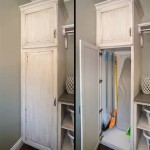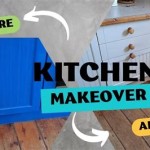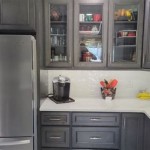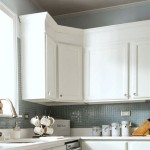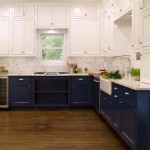Kitchen Cabinet Material Options: A Comprehensive Guide
Selecting the right materials for kitchen cabinets is a crucial decision impacting the longevity, functionality, and aesthetics of your kitchen. The sheer variety of options available can be overwhelming, each material possessing distinct advantages and disadvantages regarding cost, durability, maintenance, and style. This article provides a comprehensive overview of the most common kitchen cabinet materials, offering detailed insights to help navigate the selection process.
Solid Wood Cabinets: Timeless Elegance and Durability
Solid wood remains a popular choice for kitchen cabinets due to its inherent beauty, durability, and ability to be refinished or repainted. The term "solid wood" generally refers to cabinets constructed primarily of solid wood panels for the doors and frames. The cabinet boxes themselves may be made of plywood or MDF (Medium Density Fiberboard) to provide stability and cost-effectiveness. Different wood species offer varying colors, grains, and hardness levels, influencing both the appearance and the price.
Hardwood Species: Hardwoods like maple, oak, cherry, and hickory are prized for their strength and resilience. Maple offers a smooth, consistent grain that takes paint well, making it suitable for both modern and traditional kitchens. Oak is known for its distinctive grain pattern and durability, often used in more rustic or traditional designs. Cherry provides a rich, reddish-brown hue that deepens with age, lending a touch of elegance. Hickory is the hardest of the common hardwoods, making it exceptionally durable and resistant to dents and scratches, but it can be more challenging to stain evenly.
Softwood Species: Softwoods like pine are less expensive than hardwoods and offer a more rustic aesthetic. Pine is easily worked and stained, but it is also more susceptible to dents and scratches. It's often used in country-style or farmhouse kitchens where a more weathered look is desired. While less expensive, the lower durability generally doesn't make it suitable for high traffic kitchens.
Advantages of Solid Wood:
- Aesthetics: Offers a natural, warm appearance that is highly desirable.
- Durability: Resistant to wear and tear, particularly hardwoods.
- Repairability: Can be easily repaired, refinished, or repainted to extend its lifespan.
- Value: Adds significant value to a home.
Disadvantages of Solid Wood:
- Cost: More expensive than other materials.
- Moisture Sensitivity: Can warp or crack in humid environments if not properly sealed and maintained.
- Maintenance: Requires regular cleaning and occasional refinishing to maintain its appearance.
Solid wood cabinets represent a long-term investment that can significantly enhance the value and appeal of a kitchen. Proper maintenance is key to preserving their beauty and longevity.
Plywood Cabinets: A Durable and Stable Alternative
Plywood is an engineered wood product made by layering thin sheets of wood veneer and bonding them together with adhesive. This construction creates a strong, stable material that is less prone to warping or cracking than solid wood. While plywood is rarely used for doors and drawer fronts, it's commonly used for cabinet boxes because it offers excellent structural support and resistance to moisture.
Plywood Grades: Plywood is graded based on the quality of the veneer used on the surface. Higher grades have fewer knots and imperfections, resulting in a smoother, more attractive surface. The grade typically indicates the "face" veneer quality, with the back veneer potentially being a lower grade. Common grades include A, B, C, and D, with A being the highest quality.
Plywood Thickness: The thickness of the plywood used for cabinet boxes also impacts its strength and stability. Thicker plywood, typically ¾ inch, is recommended for base cabinets that support heavy countertops and appliances. Thinner plywood, such as ½ inch, may be sufficient for wall cabinets.
Advantages of Plywood:
- Stability: Less prone to warping or cracking than solid wood.
- Strength: Provides excellent structural support.
- Moisture Resistance: More resistant to moisture than solid wood or MDF.
- Cost-Effective: Generally less expensive than solid wood.
Disadvantages of Plywood:
- Aesthetics: Not as visually appealing as solid wood. Usually covered with a veneer or laminate.
- Edge Treatment: Edges require finishing with edge banding to conceal the layers of veneer.
- Formaldehyde Concerns: Some plywood contains formaldehyde-based adhesives, although low-VOC options are available.
Plywood cabinets offer a balance of durability, stability, and affordability, making them a popular choice for kitchen cabinet construction. Selecting high-quality plywood with low-VOC adhesives is important for ensuring both performance and indoor air quality.
Medium Density Fiberboard (MDF) Cabinets: Smooth Surface and Affordability
MDF is an engineered wood product made by breaking down hardwood or softwood residuals into wood fibers, often in a defibrator, combining it with wax and a resin binder, and forming panels by applying high temperature and pressure. MDF is denser than plywood and particleboard, offering a smooth, consistent surface that is ideal for painting or applying veneers. It is commonly used for cabinet doors and drawer fronts, particularly those with intricate designs or profiles.
MDF Construction: MDF is a homogenous material, meaning it has a uniform density throughout. This makes it easy to machine and shape, allowing for intricate detailing without the risk of chipping or splintering. The smooth surface also provides an excellent base for paint, resulting in a flawless finish.
Moisture Sensitivity: The primary disadvantage of MDF is its susceptibility to moisture. It can swell and warp if exposed to water or high humidity. Therefore, it's important to ensure that MDF cabinets are properly sealed and protected from moisture in areas prone to spills or leaks.
Advantages of MDF:
- Smooth Surface: Provides an excellent base for painting or veneers.
- Machinability: Easy to cut, shape, and rout, allowing for intricate designs.
- Cost-Effective: Less expensive than solid wood or plywood.
- Consistent Density: Provides a uniform surface for finishing.
Disadvantages of MDF:
- Moisture Sensitivity: Can swell and warp if exposed to water.
- Weight: Heavier than plywood or solid wood.
- Screw Holding Power: Can be less secure than solid wood or plywood.
MDF cabinets offer an affordable and versatile option for kitchens, particularly when a smooth, painted finish or intricate door designs are desired. Attention to moisture protection is essential to ensure longevity.
Particleboard Cabinets: The Budget-Friendly Option
Particleboard, also known as chipboard, is an engineered wood product manufactured from wood chips, sawmill shavings, or even sawdust, and a synthetic resin or other suitable binder, which is pressed and extruded. Particleboard offers the lowest cost option for kitchen cabinets, but it’s also the least durable. It is most commonly used for cabinet boxes and shelving, but it is not recommended for doors or drawer fronts due to its weakness and susceptibility to moisture damage.
Lamination and Veneering: Particleboard cabinets are typically covered with a laminate or veneer to provide a finished surface. Laminates are thin layers of plastic that are bonded to the particleboard, offering a durable and water-resistant surface. Veneers are thin slices of wood that are adhered to the particleboard, providing a more natural look. The quality of the laminate or veneer significantly impacts the overall appearance and durability of the cabinet.
Moisture Susceptibility: Like MDF, particleboard is highly susceptible to moisture damage. It can swell and crumble if exposed to water, making it unsuitable for areas prone to spills or leaks. Proper sealing and protection are crucial to extend the lifespan of particleboard cabinets.
Advantages of Particleboard
- Affordability: The least expensive option for kitchen cabinets.
- Smooth surface: Offers a smooth surface when faced with laminate or veneer
- Lightweight: Easier to handle and install than solid wood, plywood or MDF
Disadvantages of Particleboard
- Moisture Sensitivity: Easily damaged by water.
- Low Durability: Prone to chipping, cracking, and sagging.
- Poor Screw Holding Power: Difficult to secure screws and hardware.
- Formaldehyde Concerns: Often contains formaldehyde-based adhesives.
Particleboard cabinets are a budget-friendly option for kitchens, but they are best suited for low-traffic areas or temporary installations. Investing in higher-quality laminate or veneer and taking precautions to prevent moisture damage can help to improve their longevity.
Metal Cabinets: Industrial Chic and Durability
Metal cabinets offer a modern, industrial aesthetic and are known for their exceptional durability. Stainless steel is the most common type of metal used for kitchen cabinets, but other options include aluminum and powder-coated steel. Metal cabinets are resistant to water, stains, and heat, making them a practical choice for high-use kitchens.
Stainless Steel: Stainless steel cabinets offer a sleek, contemporary look and are extremely durable. They are easy to clean and maintain, and they resist rust, corrosion, and bacteria growth. Stainless steel cabinets are often used in commercial kitchens due to their hygienic properties.
Aluminum: Aluminum cabinets are lighter than steel and also resistant to rust and corrosion. Aluminum is more malleable, therefore can be prone to denting. It can be powder-coated in a variety of colors to match any kitchen décor.
Powder-Coated Steel: Powder-coated steel cabinets offer a durable, scratch-resistant finish that can be customized in a wide range of colors. The powder coating process involves applying a dry powder to the steel and then baking it at high temperatures to create a smooth, even finish.
Advantages of Metal Cabinets:
- Durability: Resistant to water, stains, heat, and pests.
- Easy to Clean: Simple to wipe down and maintain.
- Modern Aesthetic: Offers a clean, contemporary look.
- Hygienic: Resistant to bacteria growth.
Disadvantages of Metal Cabinets:
- Cost: More expensive than laminate or particleboard cabinets.
- Denting: Can be prone to dents and scratches.
- Noise: Can be noisy when doors and drawers are closed.
- Industrial Look: May not suit all kitchen styles.
Metal cabinets provide a durable and stylish option for kitchens, particularly those with a modern or industrial design aesthetic. While they can be more expensive than other materials, their longevity and low maintenance requirements make them a worthwhile investment for some homeowners.
Laminate Cabinets: Versatility and Affordability
Laminate cabinets are constructed using a substrate material, typically particleboard or MDF, covered with a thin layer of laminate. Laminate is a synthetic material made from layers of paper or fabric impregnated with resin and bonded together under high pressure and heat. Laminate cabinets offer a wide range of colors, patterns, and textures, making them a versatile choice for various kitchen styles.
High-Pressure Laminate (HPL): HPL is a durable type of laminate that is suitable for high-use areas like kitchen countertops and cabinets. It is resistant to scratches, stains, and heat, making it a practical choice for busy families.
Low-Pressure Laminate (LPL): LPL is a less expensive type of laminate that is typically used for vertical surfaces like cabinet sides and backs. It is not as durable as HPL and is more prone to scratches and stains.
Advantages of Laminate Cabinets:
- Affordability: Less expensive than solid wood or metal cabinets.
- Versatility: Available in a wide range of colors, patterns, and textures.
- Easy to Clean: Simple to wipe down and maintain.
- Durability: Resistant to scratches, stains, and heat (HPL).
Disadvantages of Laminate Cabinets:
- Damage Repair: Difficult to repair if damaged.
- Moisture Sensitivity: The substrate (particleboard or MDF) can be damaged by water.
- Edge Banding: Requires careful edge banding to prevent moisture penetration.
- Perceived Quality: May be perceived as less luxurious than solid wood.
Laminate cabinets offer a budget-friendly and versatile option for kitchens, with a wide range of styles and finishes available. Selecting high-quality laminate and ensuring proper edge banding are essential for maximizing their durability and longevity.

11 Types Of Cabinet Materials From Mdf To Stainless Steel

7 Best Kitchen Cabinet Materials To Protect You From Poor Quality Horrors

9 Popular Kitchen Cabinet Materials In Malaysia

Learn About Diffe Materials For Kitchen Cabinets To Find The One That Suits Your Needs

How To Choose The Right Kitchen Cabinet Materials For Your Project Architizer Journal

Top 7 Kitchen Cabinet Materials And Their Usage Designcafe

Kitchen Cupboard Diffe Materials Their Pros Cons
7 Popular Kitchen Cabinet Materials To Choose

New Kitchen Cabinets Cabinet Options Kitchenu

How To Choose The Best Kitchen Cabinet Design In Singapore
Related Posts


